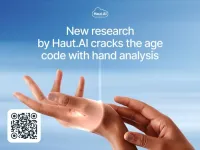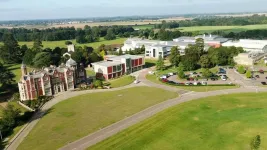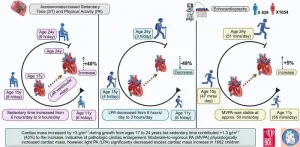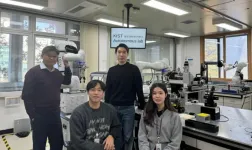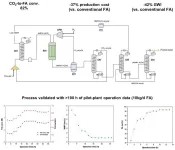The pump, a new type of ventricular assist device, or VAD, is surgically attached to the heart to augment its blood-pumping action in individuals with heart failure, allowing time to find a donor heart. The new pump could close an important gap in heart transplant care for children.
In a feasibility trial of seven children who received the new pump to support their failing hearts, six ultimately underwent heart transplants and one child’s heart recovered, rendering a transplant unnecessary. The results will be published May 7 in the Journal of Heart and Lung Transplantation. The study was led by the Stanford School of Medicine and included several medical centers in the United States.
If the early results are confirmed in a larger trial of the device, waiting for a heart transplant could become easier for small children and their families. The new pump, called the Jarvik 2015 ventricular assist device, is slightly larger than an AA battery and can be implanted in children weighing as little as 18 pounds. With the pump implanted, kids can take part in many normal activities while they wait for a heart transplant.
By contrast, the only ventricular assist device available to support small children whose hearts are failing, a pump called the Berlin Heart, is not implantable; it is as big as a large suitcase. It weighs between 60 and 200 pounds depending on the model, and is attached to the child with two cannulas almost as large as garden hoses.
The Berlin Heart also carries a fairly high stroke risk and requires hospitalization in most instances, meaning kids often endure monthslong hospital stays while they wait for a donor heart. As a result, the burden on children awaiting heart transplant is much higher than it is for adults implanted with heart pumps, who are routinely discharged from the hospital with similar diagnoses.
“While we are extremely grateful to have the Berlin Heart, a life-saving device, ventricular assist devices for adults have been improving every decade, but in pediatrics we’re using technology from the 1960s,” said the study’s lead author, pediatric cardiologist Christopher Almond, MD, professor of pediatrics at Stanford Medicine.
Implantable ventricular assist devices have been available to adults for more than 40 years, Almond noted. Not only do these devices fit inside patients’ chests but they tend to be safer and easier to use than external devices like the Berlin Heart. Patients can live at home, go to work or school, take walks and ride bicycles.
The lag in pediatric technology is a problem for other devices designed to help children with heart conditions, and in pediatrics in general, Almond noted. “There’s a huge difference in the medical technology available to kids and adults, which is an important public health problem that that markets have struggled to fix because conditions like heart failure are rare in children,” he said.
The study’s senior author is William Mahle, MD, chief of cardiology at Children’s Healthcare of Atlanta.
Far fewer children than adults need heart transplants, leaving little incentive for medical device companies to develop a miniaturized pump for children. But the lack of a small ventricular assist device for children strains the medical system, as children attached to the Berlin Heart accrue large medical bills and can occupy hospital beds in specialized cardiovascular care units for several months, potentially reducing the availability of these beds for other patients.
Promising early findings
The feasibility trial of the Jarvik 2015 ventricular assist device included seven children with systolic heart failure. The condition affects the heart’s largest pumping chamber, the left ventricle, which pumps blood from the heart throughout the body. Six children had systolic heart failure caused by a disease called dilated cardiomyopathy, in which the heart muscle becomes enlarged and weakened and does not pump correctly. One child’s heart was failing because of complete heart block (electrical failure of the heart) stemming from lupus, an autoimmune disease. All children in the trial were on a heart transplant list.
Each child had a Jarvik 2015 device surgically implanted at the left ventricle, the heart’s largest pumping chamber. At the same time, each was started on medication to prevent blood clots and lower the risk of stroke. When they received their pumps, the children were 8 months to 7 years old and weighed 18 to 46 pounds. The pump can be used for children who weigh up to 66 pounds.
If the new pump is approved by medical regulators, physicians estimate that about 200 to 400 children worldwide would be candidates for its use each year.
The trial assessed whether the pump could support patients for at least 30 days without ceasing to function or causing severe stroke. The researchers also collected preliminary safety and performance data to help them design a larger pivotal trial for possible Food and Drug Administration approval.
Although the pump is ideally intended to allow children to await heart transplants at home, because they were part of a clinical trial, the participants stayed in the hospital for monitoring until they received a heart transplant or recovered. The researchers tracked participants’ blood pressure, a marker for blood clot and stroke risk; measured hemoglobin levels to check whether the pumps were breaking red blood cells; and monitored patients for other complications.
The median time the children used the pump was 149 days. Six children received heart transplants, and one child’s heart recovered.
A few children experienced complications on the new pump. The child whose heart recovered had an ischemic stroke (from a blood clot) when the heart became strong enough to compete with the pump. The pump was removed, and the child continued to recover and was alive a year later. Another patient experienced failure of the right side of the heart and was transferred to a Berlin Heart pump to await transplant.
For most patients, complications were manageable and generally comparable to what physicians expect when a child is attached to a Berlin Heart.
Questionnaires about quality of life showed that most children were not bothered by the device, did not feel pain from it and could participate in most play activities. One family reported that their toddler was able to maintain much more mobility with the pump than his older sibling who had previously been supported with the Berlin Heart.
Larger trial planned
The National Institutes of Health has awarded funding for an expanded trial that will enable researchers to further test the utility of the new pump and generate data to submit to the FDA for approval. The next phase of research is launching now; investigators aim to enroll the first patient by the end of 2024. The research team plans to enroll 22 participants at 14 medical centers in the United States and two sites in Europe.
“We’re excited to launch the next phase of the research,” Almond said. “We’ve overcome a number of challenges to get the work this far, and it’s very exciting that there may be better options on the horizon for children with end-stage heart failure who require a pump that can act as a bridge to transplant.”
Researchers contributed to the study from the University of Texas Southwestern; Texas Children’s Hospital, Houston; Columbia University; Children’s Healthcare of Atlanta; Nemours Children’s Hospital, Florida; Vanderbilt University Medical Center; the National Heart, Lung and Blood Institute; Carelon Research; Stollery Children’s Hospital; the Hospital for Sick Children, Toronto; Boston Children’s Hospital; Cincinnati Children’s Hospital; and the University of Oklahoma, Tulsa.
The study was funded by a contract from the National Institutes of Health/National Heart, Lung, and Blood Institution (grant number HHS N268201200001I).
# # #
About Stanford Medicine
Stanford Medicine is an integrated academic health system comprising the Stanford School of Medicine and adult and pediatric health care delivery systems. Together, they harness the full potential of biomedicine through collabora
END
